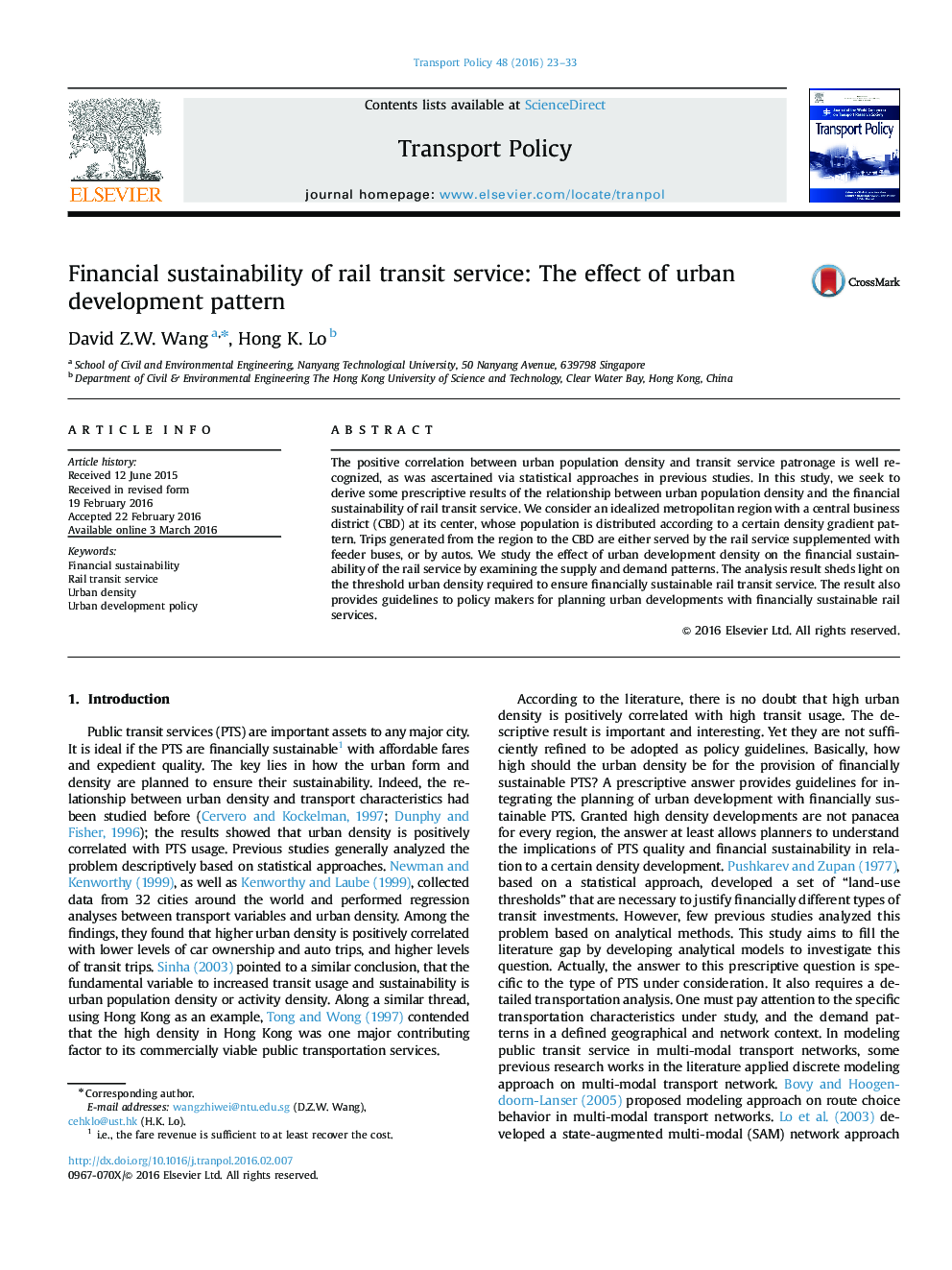| Article ID | Journal | Published Year | Pages | File Type |
|---|---|---|---|---|
| 1064710 | Transport Policy | 2016 | 11 Pages |
•An analytical modeling approach is developed to investigate the relationship between urban density distribution and public transit service financial sustainability.•We consider an idealized metropolitan region with a central business district (CBD) at its center.•We study the effect of urban development density on the financial sustainability of the rail service.•The results provide guidelines to policy makers for planning urban developments with financially sustainable rail services.
The positive correlation between urban population density and transit service patronage is well recognized, as was ascertained via statistical approaches in previous studies. In this study, we seek to derive some prescriptive results of the relationship between urban population density and the financial sustainability of rail transit service. We consider an idealized metropolitan region with a central business district (CBD) at its center, whose population is distributed according to a certain density gradient pattern. Trips generated from the region to the CBD are either served by the rail service supplemented with feeder buses, or by autos. We study the effect of urban development density on the financial sustainability of the rail service by examining the supply and demand patterns. The analysis result sheds light on the threshold urban density required to ensure financially sustainable rail transit service. The result also provides guidelines to policy makers for planning urban developments with financially sustainable rail services.
